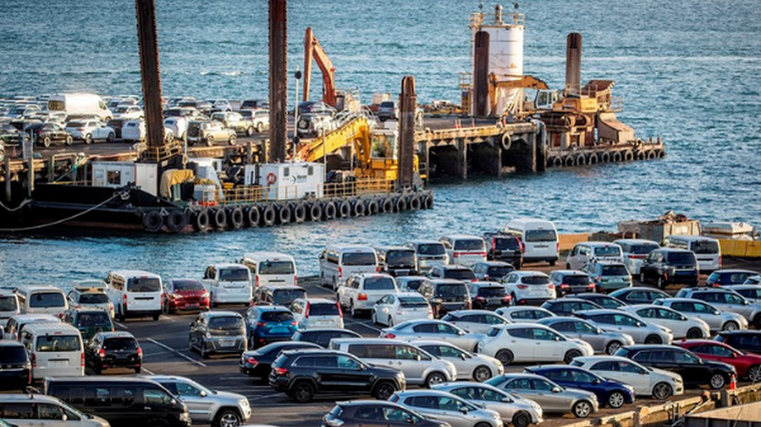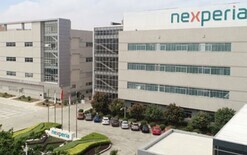Emissions rule to be amended

The NZTA is calling for submissions on recognising updated Australian Designs Rules (ADR) as an accepted alternative standard to Euro 6d when it comes to importing light vehicles.
The agency says minor changes to the Land Transport Rule: Vehicle Exhaust Emissions 2007 will continue the alignment of our standards with those across the Tasman.
A spokesperson explains: “Sharing the same standards will allow vehicles made for the larger Australian market to enter New Zealand without modification and added complexity for importers.
“The proposal to add the new ADR for light vehicles to the rule follows a 2023 update when new ADR for heavy vehicles were added.”
Aligning our compliance dates standards with Australia’s will impact new model light-vehicles entering New Zealand that haven’t been sold here before.
The NZTA also wants to make some minor text changes to the rule to clarify some definitions and clauses in it that have caused confusion, and resolve minor technical issues identified by the agency and industry.
“We encourage you to complete our survey and share your feedback,” says the agency. “Feedback about changes we're proposing will be considered before a decision is made in early 2025. The last day for feedback is January 24.”
What the proposals are
New Zealand currently allows vehicles meeting European, Japanese, American and Australian emissions standards to be imported, or global UN Economic Commission for Europe (UNECE) standards.
These improve and tighten over time to lower harmful emissions from vehicles. The introduction of new standards occurs every few years and is generally led by the EU and its “Euro” standards.
Other standards New Zealand accepts generally follow Euro regimes with some differences for local driving conditions and habits.
The rule was last updated in 2023 to incorporate and phase in Euro 6d/VI. It was also updated to include the Australian Euro VI standard for heavy vehicles, known as ADR 80/04.
The NZTA propose to update our emissions rule to incorporate Australian alternative Euro 6d standards for light vehicles. These are ADR 79/05, 111/00 and 112/00.
“Incorporating the ADR light vehicles and aligning phase-in dates with Australia is important because we share our new-vehicle market,” says the NZTA.
“This means new vehicles made for the significantly larger Australian market can be provided to New Zealand with no modification and at little additional cost to consumers.”
The amendment rule now on the table aims to bring Kiwi standards “in line with international best practice. Officials and the industry have worked together to ensure these changes will not pose any negative impacts on supply and public interests”.
The agency’s second proposal is for new-model light vehicles to be Euro 6d compliant from December 1, 2025, rather than July 1, 2027. This brings the date forward to maintain alignment with Australia’s. Other proposed changes to our emissions rule cover minor technical or clarity amendments.
Adding new ADR for Euro 6d
In April 2024, Australia strengthened its exhaust and evaporative emissions standards for light vehicles by adopting Euro 6d-equivalent requirements. Its new ADR are based on rules adopted by the UNECE.
These emissions limits are the same as required by Euro 6d. New Zealand already accepts the latter and other international alternatives.
The new ADR will come into force here at the same time other standards. Compared to the currently accepted ADR 79/04, which is aligned with Euro 5, the new ADR provides benefits.
These are:
• A 55 per cent reduction in emissions limits for NOx for diesel vehicles.
• A limit on particle numbers to control fine-particle emissions from petrol vehicles with direct-injection fuelling systems.
• More stringent rules for on-board diagnostic systems that monitor emissions control systems.
• Improved emissions tests, laboratory and on-road, to ensure reductions in emissions are also realised during normal operation.
“The main benefits to accepting these ADR are due to our new light-vehicles market being so closely linked,” says the NZTA. “Allowing vehicles to be imported under these new Australian standards will reduce complexity and cost to importers.
“Furthermore, it affords New Zealand’s relatively small new light-vehicle market a priority of supply it would otherwise not have and minimises increases in vehicle prices that could occur under different regulations.”
ADR 79/05 covers emissions control for light vehicles and is equivalent to Euro 6d. It specifies requirements for all three ADR – 79/05, 111/00 and 112/00 – and alternative standards, US Tier 3. It also provides technical descriptions for idling, crankcase and exhaust emissions.
ADR 112/00 tackles control of real-driving emissions for light vehicles. This adopts the on-road emissions test mandated in Euro 6d and specifies requirements for real-world driving testing.
ADR 111/00 covers advanced controls for light vehicles. It adopts laboratory tests in Euro 6d. It specifies WLTP test requirements for tailpipe and CO2 emissions, fuel or electric-energy consumption or range, evaporative emissions, and durability of pollution-control devices.
On-board monitoring and diagnostic systems are required by ADR 111/00. And the Euro 6d in-service conformity test requirement isn’t being carried over.
Matching up compliance dates
The NZTA’s second proposal it to complete the alignment of compliance dates for Euro 6d and its internationally accepted alternatives with Australia.
When the Ministry of Transport (MoT) and NZTA amended the exhaust emissions rule in 2023 to introduce Euro 6d/VI, they aligned our compliance date for heavy vehicles with Australia. They also set a temporary date for new model and existing-model light vehicles to comply with Euro 6d.
The temporary date of July 1, 2028, set for existing new light vehicles is the same Australia has announced for its new ADR compliance. This means the rule is already aligned with ADR dates for heavy and existing new light vehicles.
The temporary date of July 1, 2027, that the NZTA and MoT set for new-model light vehicles is different to Australia’s, which is December 1, 2025, for compliance with the new ADR.
New-model light vehicles are those that have never been sold before in New Zealand.
“We define these in the rule as vehicles manufactured in the calendar year in which the model was first manufactured,” says the NZTA. “For example, a Nissan Ariya is new-model light vehicle because it is yet to be introduced or supplied to New Zealand.
“The NZTA proposes importers must meet Euro 6d when importing new-model light vehicles from December 1, 2025.
“Essentially, importers will be required to only import new models that meet US Japanese or Australian standards, which New Zealand considers acceptable alternatives.”
This compliance date change benefits New Zealand by ensuring vehicles intended for our market meet the same standards at the same time as Australia, “reducing complexity and cost to importers”.
Aligning with Australia ensures New Zealand is unlikely to receive vehicles no longer accepted in other countries.
“We have consulted key industry partners to make them aware of our intention to align the new-model date with Australia,” adds the NZTA.
“New-model suppliers have told us bringing the compliance date for new-model light vehicles forward is manageable. We do not expect the proposed rule change to pose any supply or cost risk for new-vehicle distributors.”
Devil is in the detail
The remainder of the NZTA proposed changes to the emissions rule are “minor amendments.”
• Part 2 of the rule, definitions, Japan 2018. Changing the definition of Japan 2018 to refer to a Ministry of Land Infrastructure and Transport announcement in January 2024. Reason: Japan has updated its definition of real-driving emissions to refer to a UN regulation rather than a local rule. This update ensures we stay consistent with the Japanese standard.
• Part 2, definitions, UNR83/08. Amending it to insert the regulation number. Reason: When the previous amendment was done, this number was unavailable. Inserting the regulation number ensures ongoing clarity of which UNR regulation applies for consistency.
• Part 2, definitions. Inserting a definition of “in-service conformity”. This is a requirement in several modern emissions standards. Reason: To provide clarity this testing isn’t expected to take place in New Zealand.
• Part 2, definitions. Defining “in-service conformity family” based on the European standard. Reason: For clarity when such testing is considered completed for a vehicle.
• Part 2, definitions. Having a definition for “engine family” based on the European standard. Reason: To clarify when in-service conformity testing is completed.
• Section 2, entry requirements. Inserting a clause to clarify in-service conformity testing isn’t required to take place here and it’s not required for in-service vehicles already here. Reason:
This testing is expected to be handled by the manufacturer. The aim is to assure the industry nothing will change from the current status quo.
• Part 3, schedule 1, table 2b. Remove typo “83/07” in the title of the table, which was introduced in the previous amendment.
• Part 3, schedule 1, table 2c. Amend the table to change instances of “Japan 2005” to “Japan 05” because Japan 2005 isn’t a defined term and makes it unclear as to which standard is needed.





